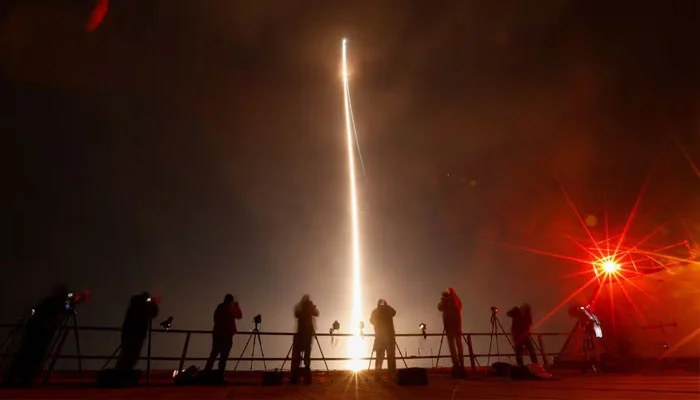A technical issue with the privately constructed moon lander Peregrine, created by the space robotics company Astrobotic, put the possibility of the first US soft lunar landing since 1972 at jeopardy.
Launched on the first launch of the Boeing-Lockheed Martin-built Vulcan rocket, the mission encountered difficulties when the lander failed to maintain the proper sun-facing orientation in space, endangering its potential to make a gentle landing on the moon.
The propulsion anomaly was acknowledged by Astrobotic, which said: “The team believes that the likely cause of the unstable sun-pointing is a propulsion anomaly that, if proven true, threatens the ability of the spacecraft to soft-land on the moon.”
The Peregrine’s mission to the moon encountered a significant obstacle even after it successfully established communication with ground crews and turned on its propulsion system.
The Peregrine might become the first-ever US soft landing on the moon by a commercial business if Astrobotic is able to get over this obstacle and continue with its mission.
Astrobotic has been anticipating this accomplishment for 16 years, and it represents a major turning point in lunar exploration.
After years of arduous preparation, ULA CEO Tory Bruno expressed his satisfaction with the Vulcan launch, calling it a “absolutely beautiful mission.”
With engines from Blue Origin, Jeff Bezos’ rocket company, the Vulcan rocket seeks to displace the Atlas V rocket and take on SpaceX’s Falcon 9 in the satellite launch business.
For Boeing and Lockheed, who jointly own ULA, the Vulcan launch’s success is crucial to their efforts to sell the company. Before Vulcan can take on profitable missions for the Pentagon, the US Space Force requires two certification flights, of which this launch is the first.
In keeping with NASA’s Artemis moon mission, Peregrine is set to arrive on the moon on February 23 with 20 payloads designed to collect information about the lunar surface.
This program envisions human expeditions to the moon later in the decade, requiring global collaboration and relying on private enterprises such as SpaceX.
Despite the challenges it faces, Peregrine’s mission helps the private sector and other nations in the competitive space exploration market continue their race to the moon.







